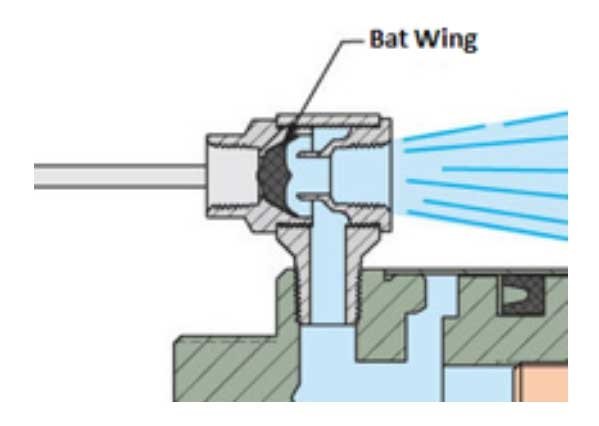Exhaust valves are found in virtually all internal combustion engines. They control the flow of exhaust gases from the engine to the exhaust system. Without them, the engine would not be able to burn fuel efficiently and would produce too much harmful emissions.
What Do Exhaust Valves Do?
Exhaust valves are an essential component in the operation of an internal combustion engine. They are responsible for controlling the flow of exhaust gases from the engine’s cylinders into the exhaust system. The exhaust valve is usually located in the cylinder head of the engine and is opened by the camshaft. As the valve opens, exhaust gases are released from the cylinder and allowed to flow out of the engine. This helps to reduce the pressure created by the combustion process, allowing the engine to operate more efficiently. Exhaust valves are typically made from steel or stainless steel and are designed to withstand the extreme temperatures and pressures of the combustion process. They are also designed to open and close quickly, allowing for precise control of the exhaust gas flow. In addition to controlling the release of exhaust gases, exhaust valves also play an important role in the performance of the engine.
The size and shape of the valve can affect the amount of exhaust gases that are released, as well as the speed of the exhaust flow. This can have a direct effect on the engine’s power output, fuel economy, and emissions levels. Exhaust valves must be regularly inspected and maintained to ensure they are in proper working order. This includes checking for signs of wear or damage, such as cracks or distortion, as well as ensuring that the valve is properly adjusted. Proper maintenance can help to prevent costly repair or replacement of the valve in the future. Finally, it is important to note that the exhaust valve is only one part of the exhaust system. Other components, such as the catalytic converter and muffler, must also be maintained and inspected regularly in order to ensure that the engine is running at its peak performance.
How Do Exhaust Valves Work?
Exhaust valves are usually operated by a camshaft. The camshaft is connected to the crankshaft via a set of gears. As the crankshaft rotates, it causes the camshaft to rotate as well. This rotation causes the cam lobes to open and close the valves at the correct time. The valve stem connects the camshaft to the valve head. The stem has a small hole in it which allows a small amount of exhaust gas to escape when the valve is open. This helps to reduce the back pressure in the exhaust system and helps to improve fuel efficiency.
Types of Exhaust Valves
There are two main types of exhaust valves: poppet valves and rotary valves. Poppet valves are the most common type and are usually made from steel. They use a spring-loaded plunger to open and close the valve. Rotary valves are more complex and are usually made from titanium. They use a rotating disc to open and close the valve.
Maintaining Exhaust Valves
Exhaust valves are one of the most important components in an engine, as they are responsible for controlling the flow of exhaust gases out of the engine. Keeping these valves in good condition is critical to the overall performance and efficiency of the engine. Proper maintenance of exhaust valves is essential to ensure that they are functioning correctly and are able to effectively release exhaust gases.
The first step in maintaining exhaust valves is to inspect them for any signs of wear and tear. If any damage is noticed, the valves should be replaced as soon as possible. Additionally, the valves should be cleaned regularly to ensure that any dirt or debris is removed. This can be done using a soft brush or cloth, and a cleaner specifically designed for this purpose.
Conclusion
Exhaust valves are a vital component of any internal combustion engine. They control the flow of exhaust gases from the engine and help to maintain the correct air/fuel ratio. Additionally, they help to reduce emissions and improve fuel efficiency. It is important to keep them maintained and in good condition to ensure that they are working correctly.


